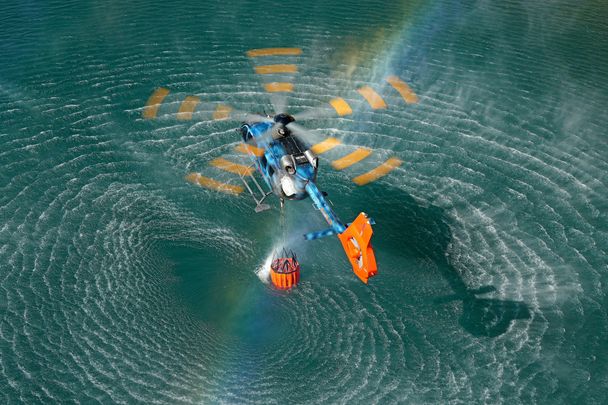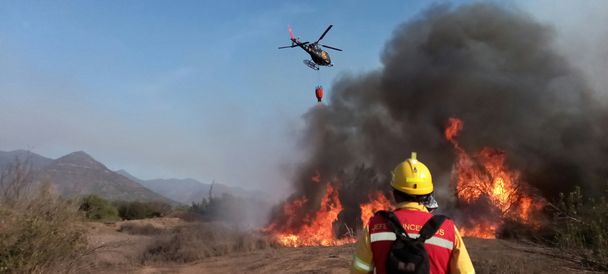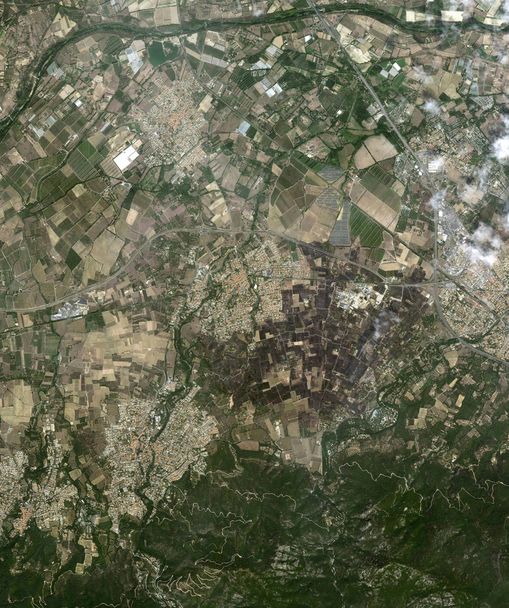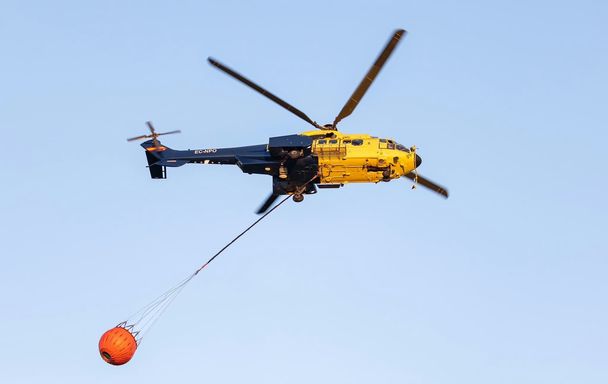End to end firefighting support with Airbus solutions

With the fire season starting in countries across the globe, our aircraft, helicopters, satellites and communications solutions are more mobilised than ever. They play an essential role in fighting fires, as they save lives and go where nothing else can. But how exactly do Airbus products contribute to this essential mission?
Equipped to tackle the blaze
It comes as no surprise that helicopters form an essential part of the assets available to firefighters when they reach the core phase of their operations: fire attack. Airbus helicopters’ proven flight capabilities in all-weather conditions are a must and night flights are set to become a new normal for firefighters. Improved avionics, automated flight features and increased interoperability remain amongst our key drivers to address this challenge and make a difference in these life-saving missions.
From the light single helicopter family to our medium-heavy workhorses, customers can rely on multiple Airbus helicopters to help them fight fires in all conditions. Water-bombing helicopters, equipped with a flexible bucket or a belly tank, will contain the fire, slow its progress and help extinguish it by dropping up to 4,000 L of water each time they fly over the fire. For instance, the H125 can drop up to 1,200L of water each time it flies over the scene. It can transport up to four firefighters with their equipment.

The H215 also exemplifies this, with its rugged design, excellent payload performance, cost efficiency and demonstrated capabilities in the most demanding conditions. Xavi Vilaró, CEO of Chilean firefighting specialist Air Lama, explains: “In the heavy helicopter segment, the H215 clearly leads the field in terms of the number of firefighters it can carry and its 4000-litre water discharge capacity. It also has the longest range in its category. Our customer, the Chilean National Forest Corporation (CONAF) is more than satisfied.” As the fire season is picking up in the region, four additional AS332 helicopters have been awarded by the CONAF, bringing the available fleet to seven rotorcraft in Chile.

Airbus Defence and Space, in collaboration with Spanish aerial firefighting experts, also conducted a new flight test campaign of the A400M Roll-on/Roll-off firefighting prototype kit. The tests included dropping 20,000 litres of retardant and creating lines up to 400 metres long. The campaign took place over a two-week period in November 2023 in south-western and central Spain and included six drops, three of which used red coloured retardant and three of which used water.
The roll-on/roll-off kit does not require any modification to the aircraft and, therefore, is interchangeable to any aircraft in the A400M fleet. The water or retardant is stored in a tank in the cargo hold of the A400M and, by using a mechanical lever, a door is opened to allow the liquid to flow out of the aircraft by gravity means through a discharge pipe. The tanks can be filled in less than 10 minutes using standard high-pressure pumps on ground.

Furthermore, the C295 has been used earlier this year by the Colombian Air Force to drop Guardian Caylym boxes to attack wildfires. The fire extinguishing version of this aircraft is currently under development and could be key in the near future for extinguishing fires by discharging both water and retardant.
First on the scene for life-saving operations
Airbus’ aircraft aim to support firefighters during the fire attack phase of their mission, but the Company’s solutions would not be complete without the unique information and perspective from space provided by satellites. With their ability to see through clouds and their wide geographical coverage, satellites can help detect fires at an early stage, monitor and analyse their progress and assess the damage.
For instance, the Copernicus Emergency Management Service (CEMS) plays a vital role in all phases of emergencies by providing geospatial information. The service provides users with maps, time-series or other relevant information using satellite data to better manage disaster risk. The Copernicus satellites, for which Airbus played a key role in constructing some of the satellites and instruments, have monitored forest fire activity in near-real time and support wildfire management.
Very high-resolution imagery from the Airbus’ Pléiades Neo satellites is another valuable tool for showing the extent of an area of damage in detail, as it was the case in August 2023 when a major fire broke out between Sorède, Saint-André and Argelès-sur-Mer in the Pyrénées-Orientales region of France at the height of the tourist season.

The multirole aircraft C295 can also be a key asset to monitor fires. For example, the aircraft from the Chilean Navy has been able to detect and monitor various outbreaks of fire thanks to its optical and infrared cameras, enabling it to fight them from a very early stage.
Evacuation represents a challenge in firefighting operations, whether to extract citizens from an endangered area in a Search and Rescue configuration or to protect and evacuate firefighters from the scene. Both the H145 and H225 have a high advantage in this phase of the mission. As the market leader in the EMS (Emergency Medical Services) segment, the H145 is a trusted partner when rescuers intervene in the first “Golden hour”. Additionally, our H225 is an equally important asset for the evacuation of firefighters, with its high payload and proven winch capabilities. From observation to detect any fire that may be starting, to driving the rescue and reconstruction effort after a fire has hit, helicopters perform life-saving operations throughout firefighting missions.

Always connected
When a fire breaks out, communication is the critical lifeline for fire and rescue services. In this context, nationwide secure communication networks and powerful devices and applications from Airbus help to improve coordination between firefighters, providing real-time situational awareness and a common operating picture. For example, Airbus' professional communication application Agnet is used by several public safety organisations, including those in France and Finland. It seamlessly connects teams regardless of the device. In the UK, 70% of mainland fire and rescue services rely on the digital solution SAFEcommand to provide them with critical incident information for better coordination.
Airbus Defence and Space is also developing a state-of-the-art crisis management system (CMS) that enables a 360° situational awareness picture and scenario simulation. The system will help manage crises and disasters, such as wildfires or floods, where real-time and predictive data are essential. It not only integrates different data sources, but also links all the components of crisis management, starting with communications, people, procedures, etc. This holistic approach will support preparation, planning, effective coordination and collaboration.
Airbus' end-to-end firefighting support
Airbus aircraft, helicopters, satellites and communications solutions play an essential role in reducing the risk of wildfires and mitigating their impact once they have broken out. Our solutions help detect fires at an early stage, monitor and analyse their progress, bring firefighters to the scene, help them extinguish fires in demanding environments, improve the coordination of all ground and aerial means and support life-saving operations, going where nothing else can.
